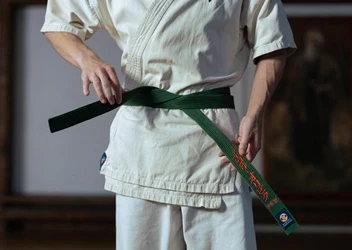Delivering the benefits of process excellence and creating the environment for change at JEA Utilities
Add bookmarkPEX Network's 2013 Deployment Leader of the Year on what it takes to create lasting change
What does it take to transform a culture of "that’s how we’ve always done it" to one that embraces improvement? Rod Hill, Master Black Belt at JEA and winner of PEX Network’s Deployment Leader of the Year for 2013, describes the evolution of process excellence program at JEA, a Florida-based public utility, and how it fits into the company’s top level strategy.
JEA is the integrated public utility service provider for electricity, water, waste water, reclaimed water, chilled water and public safety radio services for the First Coast (northeast) of Florida. With revenues totalling $2 billion in 2011, the organization delivers over 3 gigawatts of instantaneous electricity production and 4 billion gallons per month of potable water production. JEA’s 2,000 employees deliver the essential services that make civilization possible for one million people in Northeast Florida.
Facing deregulation in the late 1990’s, JEA explored ways to succeed in a new competitive landscape and decided that approaches to improve organizational performance were required for survival. The decision was made to deploy a Six Sigma Process Improvement initiative and to re-organize the business closer to processes than functions.
I was recruited in October, 2000 to lead the effort. The first wave of 10 Black Belts and 20 Green Belts started in December 2000. The organization was redesigned and the new organization structure was deployed on October 1, 2001. All members of management were required to become certified Green Belts.
Documented project selection and execution accelerated during 2001 through 2004 and stabilized during 2005 through 2012. Many projects are now created and executed and the results documented in improved financial performance and customer satisfaction but many projects are no longer submitted to the central Organizational Performance Improvement group for documentation.
In short, we now have data accuracy issue about program impact. This lack of concern about "taking credit" for improvements achieved makes it clear that JEA has matured from the culture that accepted "that’s how we’ve always done it" to a culture that expects and embraces improvements.
In 2011, deployed improvements reduced costs by $150 million or 7 ½ % of total revenue. In the 12 years since program inception, the payoff for an investment of $28 million has been a stream of nearly a billion dollars or an average annual return on investment of over 2000%.
The following table summarizes key milestones in the evolution of JEA’s process improvement program:
|
Process Improvement Timeline: |
|
|
2000 |
Rod Hill joined JEA to lead the Performance Improvement work. First wave of Six Sigma Black Belts. |
|
2001 |
Company-wide reorganization. Second wave of Black Belts. |
|
2002 |
Over 150 JEA employees completed basic Process Improvement and Green Belt (GB) training. |
|
2003 |
100% of JEA management completes GB certification. |
|
2004 |
Third wave of Black Belts includes full time and in-place candidates (who still work in their respective jobs while pursuing certification). |
|
2005 |
Circle of Excellence introduced to assure organizational alignment. |
|
2006 |
Fourth wave of Black Belts; One seat is provided to a customer. |
|
2007 |
Initiative expanded to formally include Lean. |
|
2008 |
Fifth wave of Black Belts; Two seats are provided to external candidates. Introduced DMAGIC (Define – Measure – Analyze – Green – Improve – Control). |
|
2009 |
Trained first wave of Green Belts for Jacksonville Sherriff’s office. Reached out to help a variety of public and private organizations throughout Northeast Florida. |
|
2010 |
Centralized Organizational Performance Improvement group assumed role of providing strategic direction support. Sixth wave of Black Belts including candidates from outside JEA |
|
2011 |
Continuing successes internally and reached out to deliver Process Improvement assistance to Not For Profit organizations providing sustenance of life services. Seventh wave of Black Belts. |
|
2012 |
Expansion of internal and external presence impacting the lives of thousands of people. Established relationship with University of North Florida to expose students to real process improvement projects. |
_
Direction Setting and Portfolio Management
Creating the vision for the organization and integrating process improvement to align with that vision began in 2000 with then-CEO, Walt Bussells. Walt had read the General Electric story and decided JEA could benefit similarly.
The Corporate Strategy Team concurred and identified the need for someone with expertise in initiating successful performance improvement work at other organizations to lead the effort. I was hired to lead JEA’s process improvement effort following a track record of successes at Harnischfeger Corporation, SPX Corporation and Procter & Gamble.
Now, JEA’s process improvement efforts are realigned on an annual basis. Each year, JEA’s executive management utilizes a two day retreat to develop strategic direction, refine corporate vision and to set focus areas for the current year’s improvement activities.
During the 2005 strategic planning sessions, the "Circle of Excellence" was introduced. Each year thereafter, the executive management team reviews the strategic plan and organizational results. Based on the assessment of corporation, the executive management team selects three or four areas of the "Circle of Excellence" as focus areas. Based on areas of responsibility, management has segments of the "Circle" loaded into their personal evaluation scorecard.
The result is a clearly tracked alignment of goals and activities to minimize waste and maximize progress toward our mission. Each project that is defined and selected for possible assignment is assessed to see that it supports the Circle of Excellence and that it supports the current focus areas selected by senior management.
All improvement projects must support the Circle of Excellence
Delivering the Benefits
Yellow Belt, Green Belt and some Lean projects are defined and executed by individual process owners. Since every manager is a certified Green Belt, we have provisioned the organization to successfully maintain improvement activities within each work group. The centralized group of Black Belts (ranging from an all-time low of 7 to an all-time high of 12) serves as bench strength for filling the ranks of management. The central group also trains Yellow, Green and Black Belts, executes process improvement projects and fills the roll of consultant for many internal research projects and studies. Many of these studies contribute information for key strategic decisions.
As a continuing practice, JEA conducts four waves of Yellow Belt and four waves of Green Belt training each year. Any seats not filled by JEA personnel are offered to outside community organizations at no charge. The result is an ever-expanding influence of "Improving the Quality of Life in the Communities We Serve".
Our communication plan is a carefully managed effort that is highly sensitive to public scrutiny. We use a modified A3 process to communicate internally. Each successful project is documented on a 24" X 36" poster. The posters are displayed internally to share successes. In some divisions of the organization, an annual one-day session is held to review accomplishments and recognize good work. Process improvements are included in every Manager, Director and Vice President Business Review (twice a year).
Creating the Environment for Change
As project ideas arise, they are captured in a proprietary database and evaluated through a series of criteria. The criteria includes potential financial impact, alignment with strategic vision of the organization, alignment with senior management’s focus for improvements for this year, level of support from Process Owners and availability of a committed Champion. Effective October 1, 2012, a new CEO, Paul McElroy took over the leadership of JEA. His first action as CEO was to reassign the Black Belt Team (now consisting of 5 MBB’s and 3 BB’s) to report directly to the CEO. He now personally directs how the Black Belt resources are to be deployed and which projects have the highest priority for the upcoming quarter. Black Belt & Green Belt project status and results are continually tracked using a consistent methodology.
New Black Belts are a source of bench strength for JEA management that replaces certified Green Belts with certified Black Belts and will continue to drive the process improvement bias into JEA’s culture.
In addition to the internal work, I help not-for-profit organizations like Trinity Rescue Mission, the Girl Scouts, City Rescue Mission, Second Harvest Food Bank and others. That work has produced an additional 1 million meals per year and saved over a half a million dollars a year in fund raising while delivering the same or better services to more people. That work will be shared in a PBS television series called "Community Excellence Alliance; A different kind of caring!".
Find out more about the Community Excellence Alliance in this downloadable PDF Deploying Process Excellence in the community. And want to hear more? Rod Hill talks about the challenges he faced along the way and key lessons learned in the related podcast "PEX Network's 2013 Deployment Leader of the Year on being a 'process evangelist'".
[eventPDF]






















